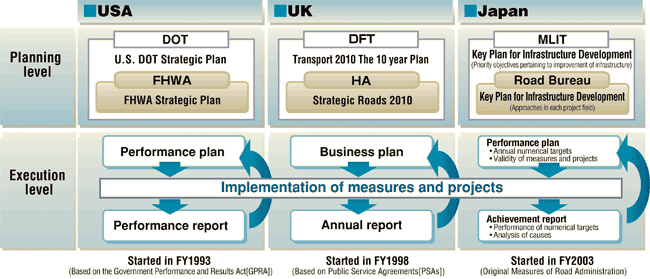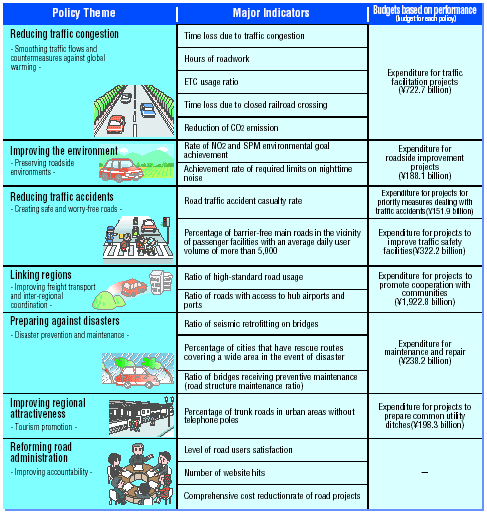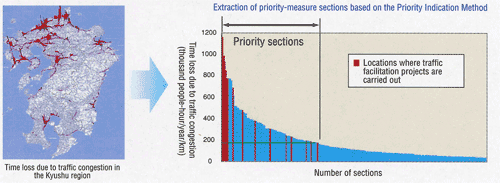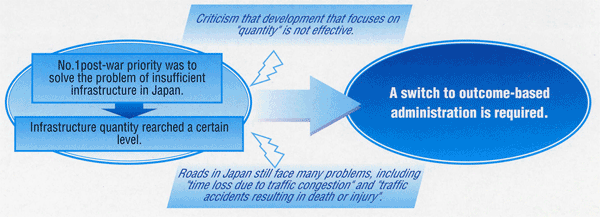■ Implementing Outcome-based Road Administration Management in Japan -2005
■Download PDF ver. (922kb)
Switch to Outcome-based Road Administration
Outcome-based Undertakings in Other Countries
Since the 1980s, several countries, including the US and UK, have been promoting administrative reform called "New Public Management" (NPM), in which private-sector management approaches are incorporated into administration, in order to ensure efficient administration.
In NPM, policy objectives are set using outcome indicators (i.e., indices expressing results), performance is analyzed and assessed every year, and the results are reflected in future policies and projects.

Outcome-based Road Administration Management
|
In FY2003, a new administration management framework was adopted in order to ensure more effective, efficient, and highly transparent road administration from the viewpoint of the citizens.
This framework involves the following aspects: Numerical targets are set beforehand (Plan), Measures and projects are implemented (Do), Achievement levels are evaluated (Check) and Results are reflected on administration management in next year (Action).
In the future, undertakings in cooperation with the community will be carried out in order to accurately meet public needs and to promote better road administration.
Road administration management has been promoted based on opinions provided by experts of the Study Committee for Road Administration Management (headed by Professor Shunichi Furukawa, Graduate School of the University of Tsukuba)
|
|
Familiarization with Outcome-based Road Administration Management
Action toward more effective and efficient budget allocation is being implemented together with introduction of budget allocation based on performance (budget for each policy) ahead of other publicworks and strengthening of linkage between assessment and budget.
■Shift from budget allocation based on road type to allocation based on performance (budget for each policy)
|
In FY2004, budget allocation based on road type (such as national highway", "local road", etc.) was shifted to allocation based on the performance of each policy (e.g., traffic facilitation and cooperation with the community ).
In FY2005, priority measures dealing with traffic accidents was established as a budget item to further urgent policies that focus on traffic accidents.
Policies are classified into seven categories on the basis of social need in order to easily assess budgets based on performance (budget for each policy) and the correspondent outcomes of related indicators. In addition, easily comprehensible numerical targets that are closely linked to daily living are set for each category, covering such items as time loss due to traffic congestion, etc..
|

 |
■Budget allocation for more efficient project implementation
|
More effective and efficient traffic facilitation projects are being executed based on local conditions by, for example, arranging road sections according to time lost due to traffic congestion and then selecting areas requiring priority measures.
|
 |
■Download PDF ver. (922kb)
